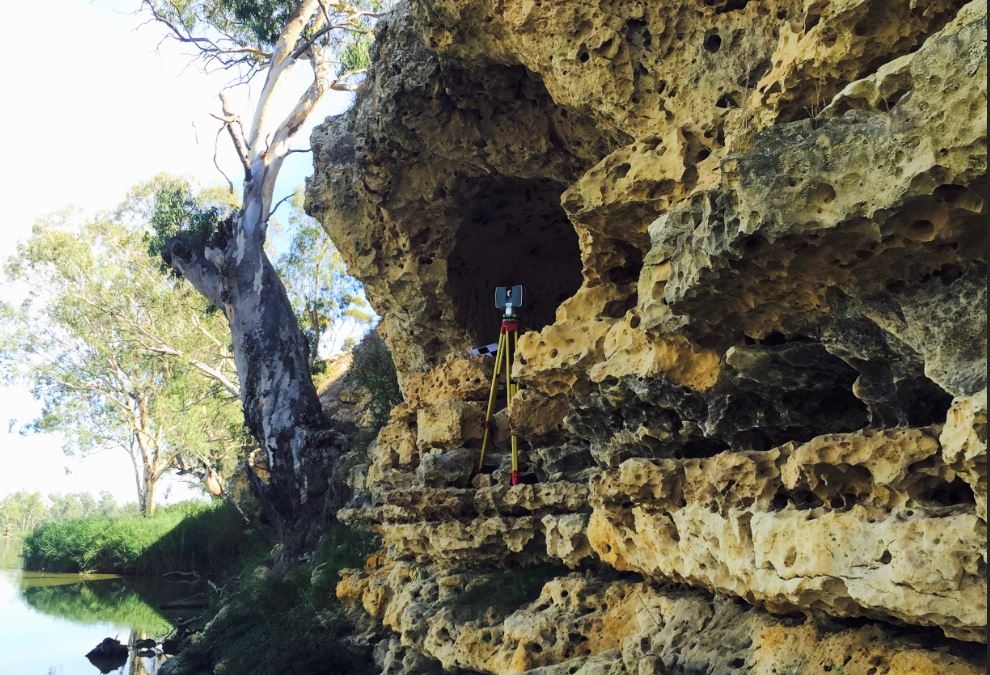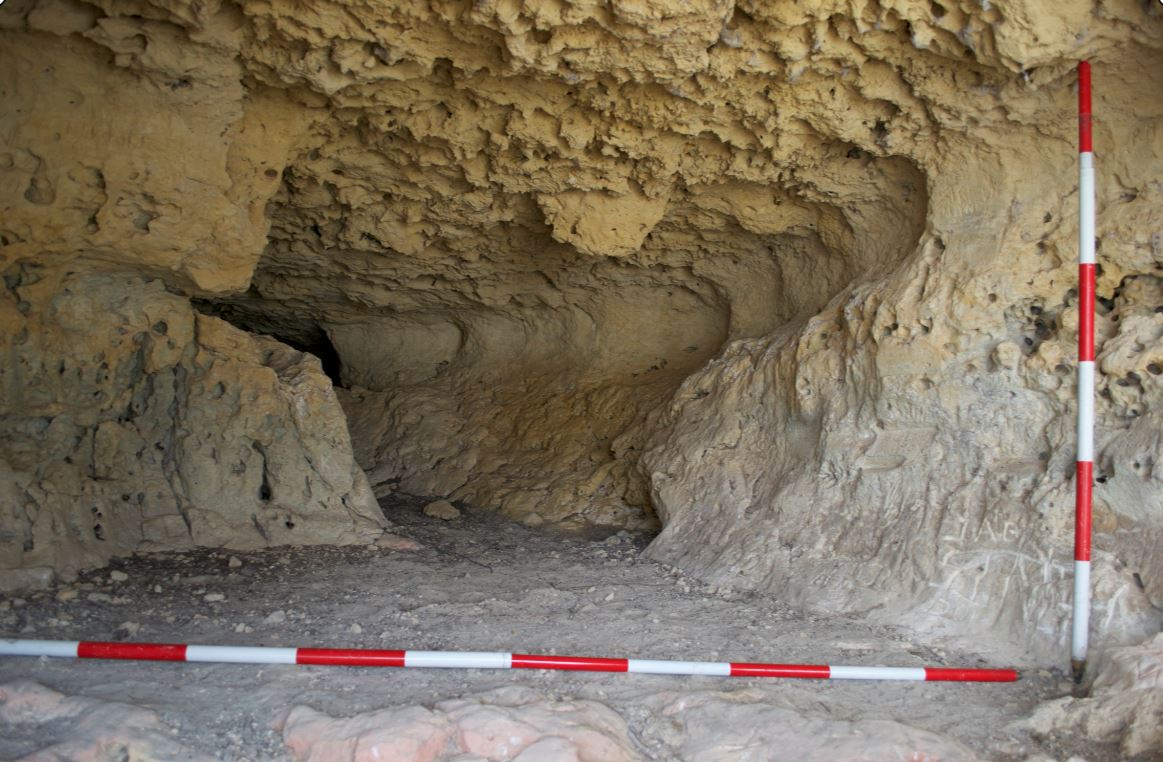
A stark reminder of colonial invasion and the strife brewing in Europe ahead of World War Two has been discovered among 188 engravings in a remote South Australian rockshelter.
The 'graffiti' has been inscribed over or adjacent to Aboriginal rock art at a culturally significant rockshelter in the limestone cliffs of the Murray River near Waikerie, Flinders University archaeologists have revealed.

The engravings reveal the deep Aboriginal significance of the rockshelter, the traumatic period of European invasion, and the frontier conflict and ongoing impacts of colonial settlement, says lead author Flinders Associate Professor Amy Roberts.
The archaeologists from Flinders University, in partnership with the River Murray and Mallee Aboriginal Corporation, have published their observations in a new article in Australian Archaeology.
"Of the 188 motifs identified, only one engraving remained that could be positively identified as a pre-European Aboriginal design - a 'treelike' motif," Associate Professor Roberts says.
"The rest of the identifiable historical inscriptions were the work of members of frontier conflict/punitive expeditions, local European settlers and a non-local Aboriginal man. Of the motifs that can be confidently identified one incorporates a swastika, engraved in 1932."

The first European historical inscriptions were engraved by members of volunteer police parties on punitive expeditions, and were part of a historical trajectory that later culminated in the Rufus River Massacre.
"It is unlikely that police party members were unaware of this deliberate desecration when they added their names to the front of the shelter," says co-author Flinders University Professor Heather Burke.
The authors argue that these historical engravings breach the Aboriginal cultural space and represent the first acts of trespass and desecration.
Fiona Giles, co-chair of the River Murray and Mallee Aboriginal Corporation, says: "We need to tell these stories to protect our history and heritage so that our culture is respected and not lost.
"For us, as traditional owners, this rockshelter is a highly significant and special place. It tells the stories of our ancestors and shows our deep connection to the river and reminds us of how our people lived before Europeans invaded our world," she says.
The paper, 'Connection, trespass, identity and a swastika: mark-making and entanglements at Pudjinuk Rockshelter No. 1, South Australia'(April 2020) by Amy Roberts, Heather Burke, Catherine Morton and the River Murray and Mallee Aboriginal Corporation has been published in Australian Archaeology DOI:10.1080/03122417.2019.1738666







